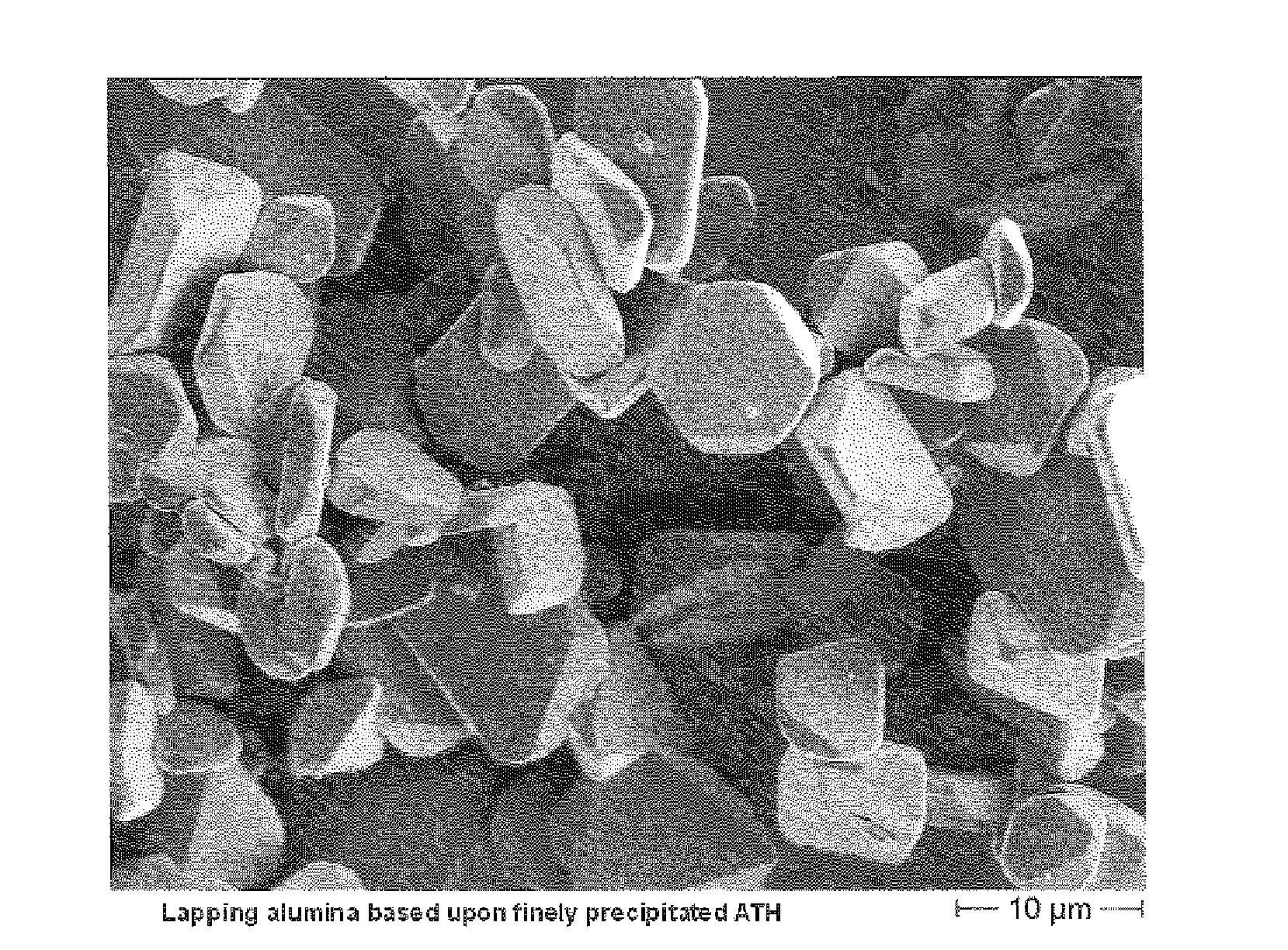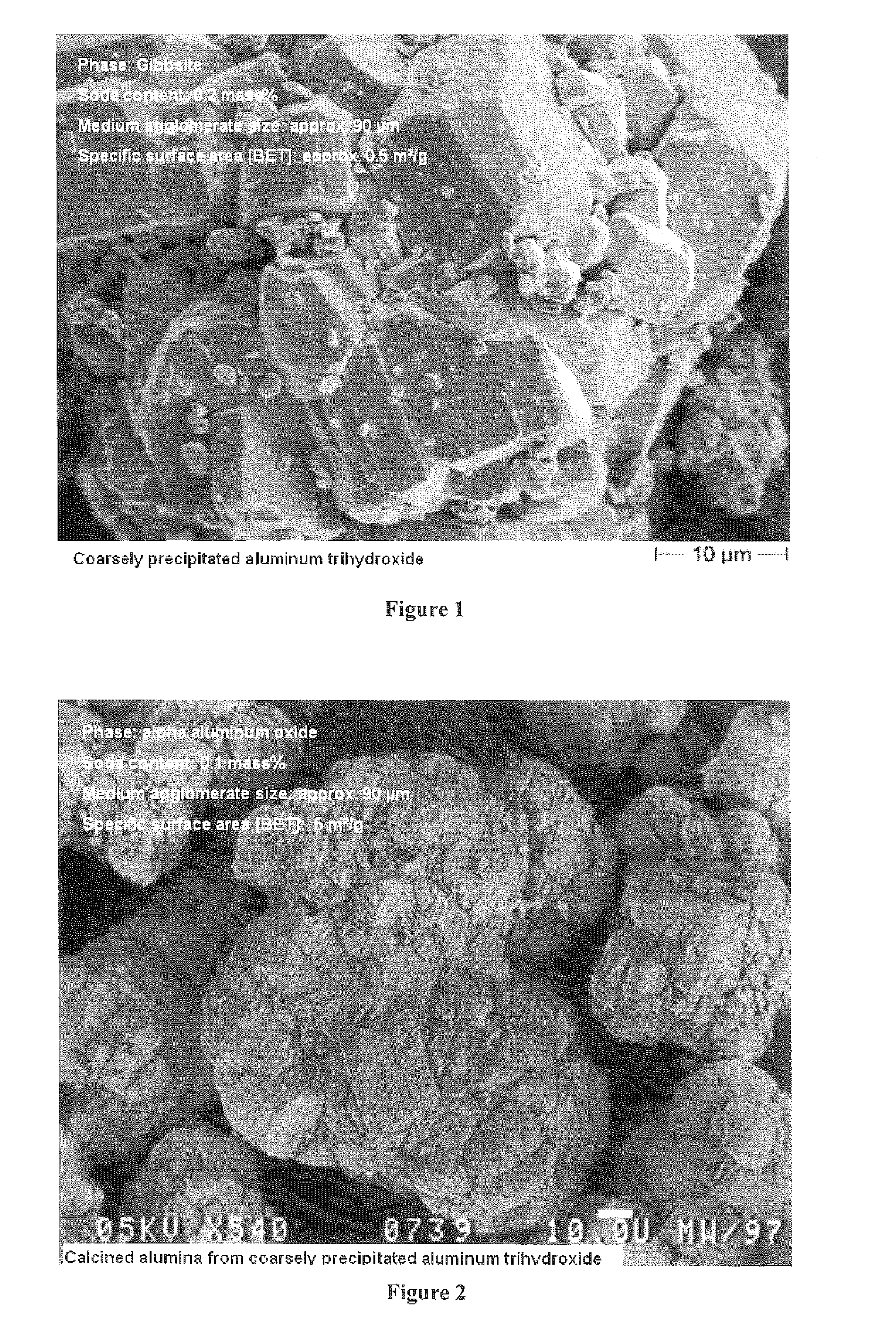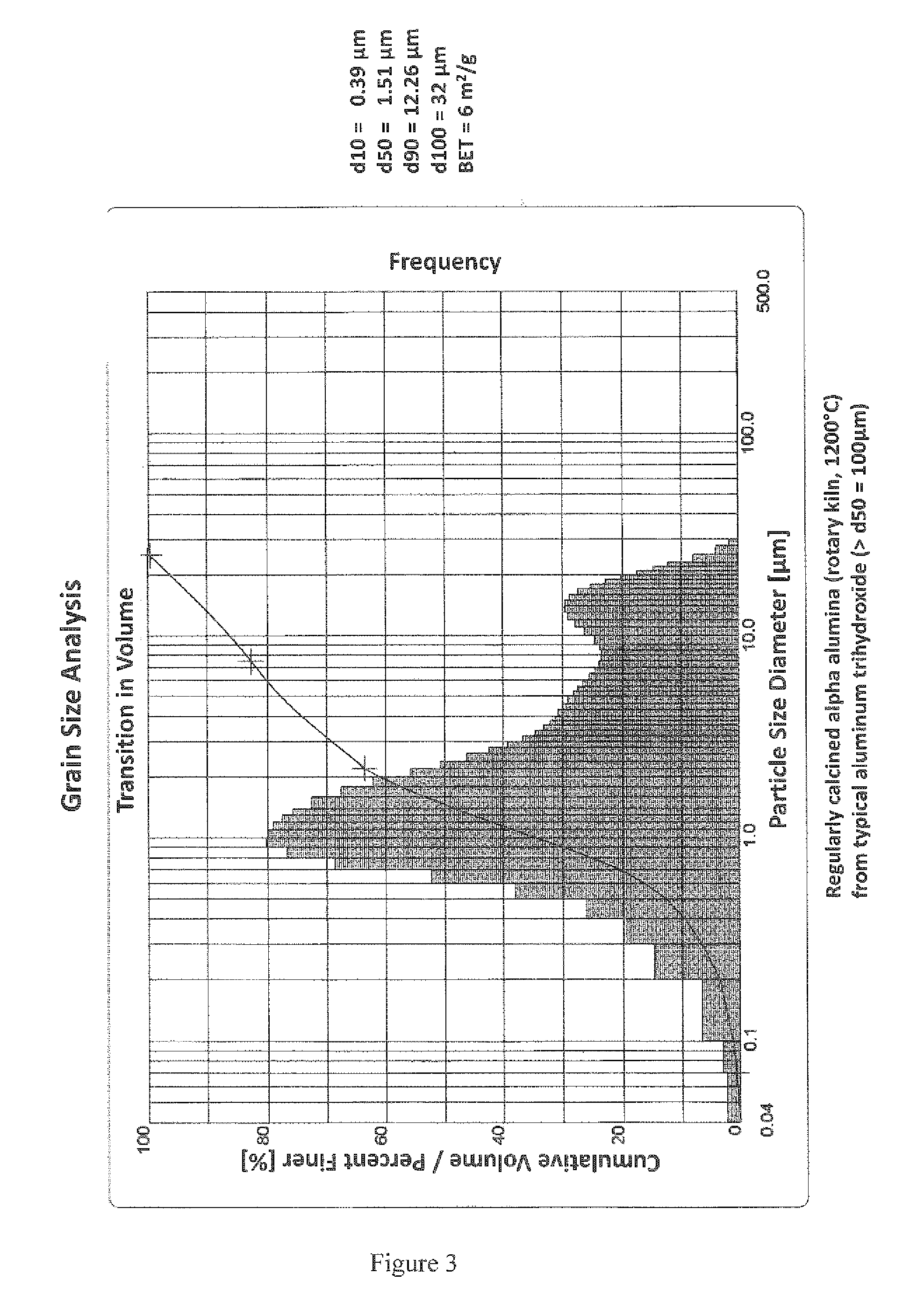Production Method of a Novel Polishing Alumina
- Summary
- Abstract
- Description
- Claims
- Application Information
AI Technical Summary
Benefits of technology
Problems solved by technology
Method used
Image
Examples
examples
[0203]The Examples correspond to embodiments as follows:
Polish / Abrasive
[0204]Example 1[0205]Example 2 (surface modified with acetic acid)[0206]Example 3 (dispersant)[0207]Example 4, 5, 6 (PEG, friability)[0208]Example 9, 10 (seeding)[0209]Example 11: (change in polymeric support)[0210]Example 13: pseudo boehmite (binder) only, sal gel[0211]Example 15: pseudo boehmite (binder), seeds, sol gel[0212]Example 17: aluminium trihydroxide (ATH), pseudo boehmite (binder), seeds, sol gel[0213]Example 19: ATH, pseudo boehmite (binder), seeds, sol gel, friability[0214]Example 20 and 21: seeds[0215]Example 22 and 23: ATH, pseudo boehmite (binder), seeds, sol gel[0216]Example 24 and 25: ATH, pseudo boehmite (binder), seeds, sol gel, friability[0217]Example 27 and 28: thickening of slurry, cerium acetate[0218]Example: 29: Ti-doped alumina[0219]Example: 30: Mn-doped alumina[0220]Example 34: from aluminium salt[0221]Example 43: ATH, pseudo boehmite (binder)[0222]Example 46: undispersed with disperse...
example 1
[0252]The particles prepared by the method of this example are particularly appropriate for high gloss polishing applications. A slurry was formed from Martigloss™ containing 68 wt % Al(OH)3 and 32 wt % de-mineralized water. The compounds were homogeneously mixed and poured on a saggar, which contained a porous polyether sponge support with an average pore size of 2.5 mm. The inlet-saggar support system was heated in an industrial gas-fired box kiln at a rate of 100° K / h from room temperature to 1150°. The holding time at maximum temperature was 5 hours. After desagglomeration in an air-jet-mill without classifier installation, a grain size distribution having a d50 of 1.2 μm and a d90 of 3 μm was measured with the laser granulometer Cilas™ 1064. The BET has been determined at 14 m2 / g (Gemini VI).
example 2
[0253]The particles prepared by the method of this example are particularly appropriate for high gloss polishing applications. A slurry was formed from 71.9 wt % Al(OH)3, Martinal™ OL-107 LEO containing 24.6 wt % de-mineralized water. 3.5 wt % acetic acid, functioning as a surface modifier and dispersant, has been added to the de-mineralized water before addition of the powder.
[0254]After homogeneously mixing the slurry, the slurry is applied to the same type of saggar-enclosed sponge and in the same manner as Example 1. The sample is subjected to a heating ramp at 100° K / h and a retention time for 5 hours at a maximum temperature of 1200° C. After desagglomeration in an air-jet mill, a grain size distribution having a d50 of 1.6 μm and a d90 of 3 μm was measured with a laser granulometer Cilas™ 1064. The BET surface was determined to be 7 m2 / g (Gemini VI).
[0255]Milling was conducted in an air-jet mill (Alpine AFG 200). The processing conditions were[0256]Milling parameters of mill:...
PUM
 Login to View More
Login to View More Abstract
Description
Claims
Application Information
 Login to View More
Login to View More - R&D
- Intellectual Property
- Life Sciences
- Materials
- Tech Scout
- Unparalleled Data Quality
- Higher Quality Content
- 60% Fewer Hallucinations
Browse by: Latest US Patents, China's latest patents, Technical Efficacy Thesaurus, Application Domain, Technology Topic, Popular Technical Reports.
© 2025 PatSnap. All rights reserved.Legal|Privacy policy|Modern Slavery Act Transparency Statement|Sitemap|About US| Contact US: help@patsnap.com



